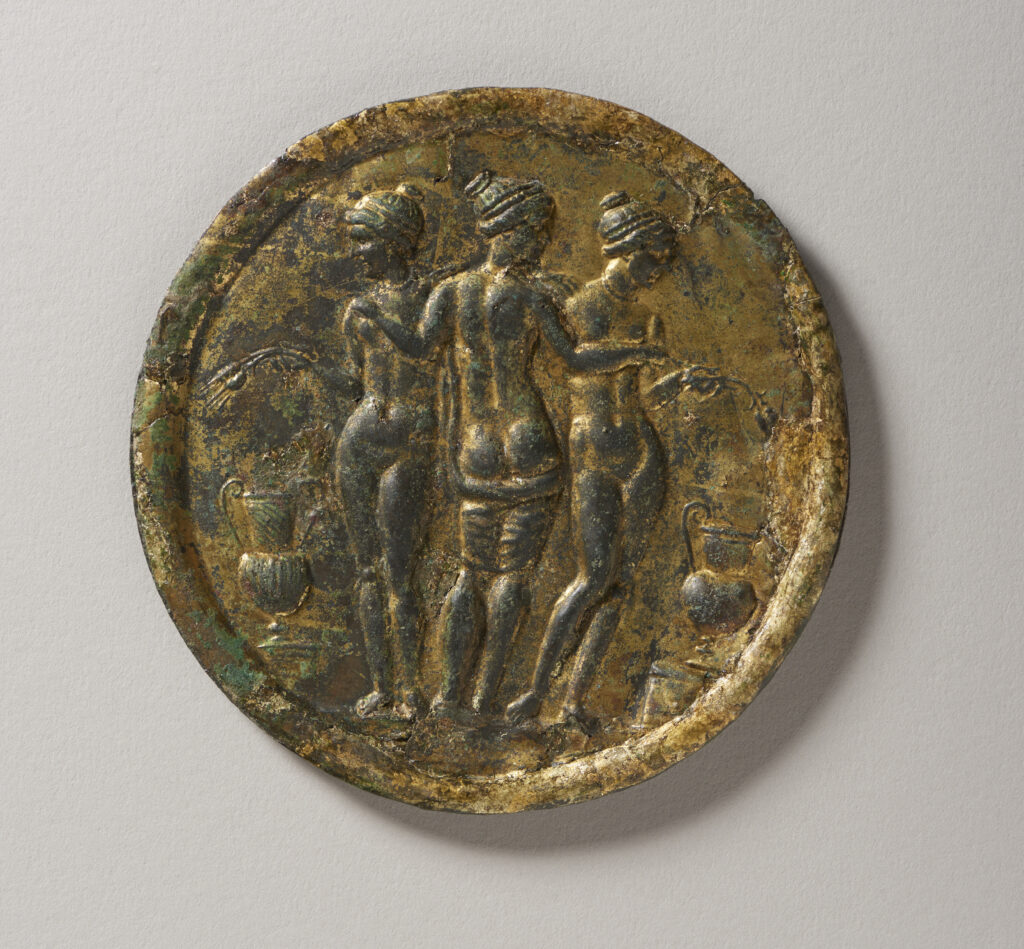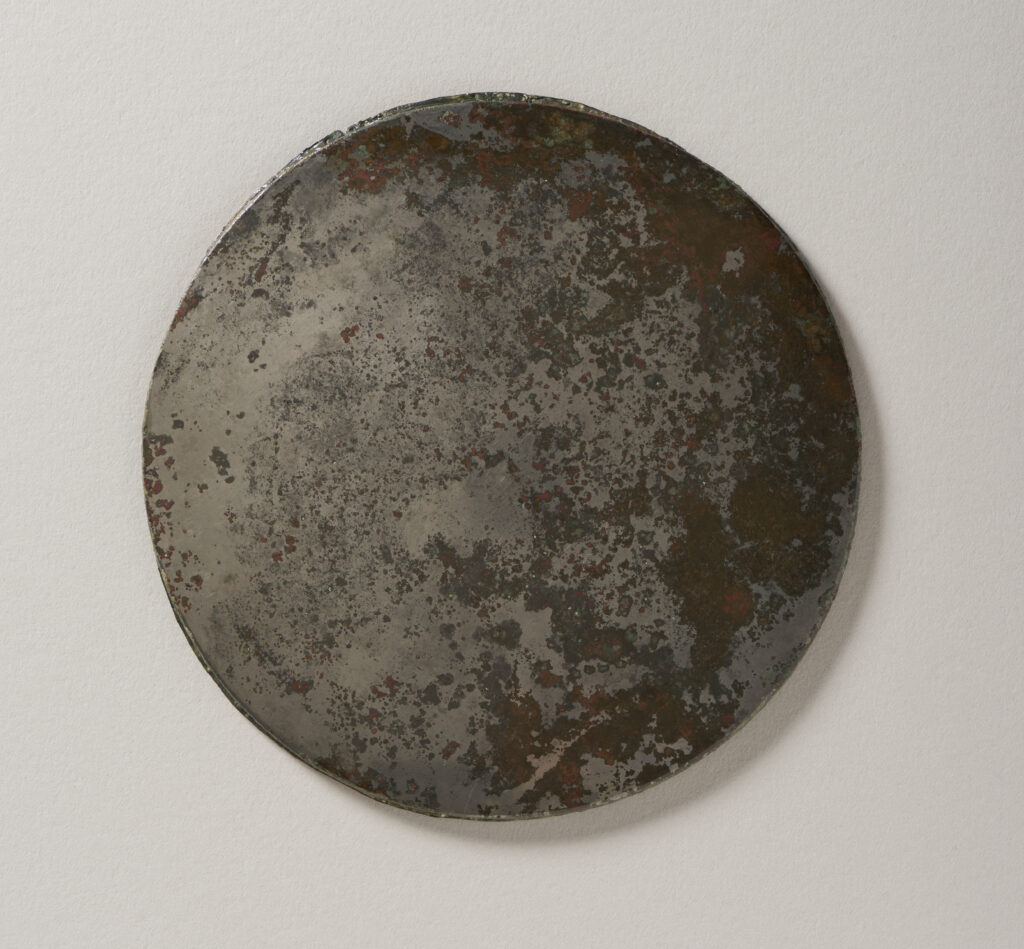Mirror with the Three Graces (work of art)
Artwork Info
About
Key Ideas
- Three nude female figures are the focal point of this composition. The women’s similar poses and the images of bundled wheat and water vessels beside them create a sense of balance. These central figures are known as the Three Graces. They are goddesses from Greek mythology who represent Plenty (Thalia), Joy (Euphrosyne), and Beauty (Aglaia).
- Beauty was a popular theme for mirror decoration. Gods and goddesses who represented beauty were often depicted on mirrors.
- The design of the Three Graces is a raised decoration on the back of a mirror. Mirrors produced in the ancient world came in many forms. Most mirrors from this time period were round, but square and rectangular mirrors were also produced.
- One side of this mirror was finely polished to create a reflective surface. The other side was gilded, which means gold leaf was added to its surface.
Learn More
The Three Graces were goddesses in Greek mythology. They appeared in Greek myths as early as the eighth century BCE, during the time of Homer and Hesiod. The Three Graces were depicted in Greek art as individuals with their own unique personalities. They were also common figures in Roman iconography associated with beauty and grace. On Roman objects (such as this mirror), the Three Graces look almost identical. They are shown with similar hairstyles, faces, and bodies.
The Three Graces served as handmaidens to Aphrodite, the Greek goddess of love and beauty. In Roman art the Three Graces were often depicted as nude figures. This further connects them with Aphrodite, who was generally depicted without clothing in Greek art. Associations with beauty made the Three Graces an appropriate subject for mirror decoration. Images of Aphrodite and Eros, the Greek god of love, were also popular mirror designs.
This mirror is made from polished bronze. In early bronze working, the amount of tin in the bronze alloy was often low. To make functional mirrors, the makers increased the amount of tin in the bronze. This enabled them to produce mirrors that were highly reflective, hard, and corrosion resistant. Many Roman mirrors came with protective covers. Mirrors without covers had to be wrapped in cloth or straw to keep them shiny and reflective. Mirror with the Three Graces had no cover or handle. Mirrors in the ancient world were costly items. The gilding on this example indicates high quality.
In museum collections throughout the world, there are at least 11 Roman bronze mirrors with similar designs of the Three Graces. Each mirror was created using a metal-decorating technique known as repoussé. The name is a French term that means to “push up” or “push forward.” This technique involved hammering metal from one side to create a raised design on the other side. Additional details were added by chasing, a process in which designs were punched into the front side of the metal.
Additional Resources
Resources for Teachers:
- Watch a video about the repoussé process.
- Watch a video about the conservation of ancient bronze.
- View a similar mirror that is decorated with the Three Graces.
Resources for Students:
- Watch a video to see a Roman bronze mirror being polished.
- Watch a video about Roman metalworking technology and relief decoration.
- Explore the NCMALearn page about Mickalene Thomas’s Three Graces: Les Trois Femmes Noires.


